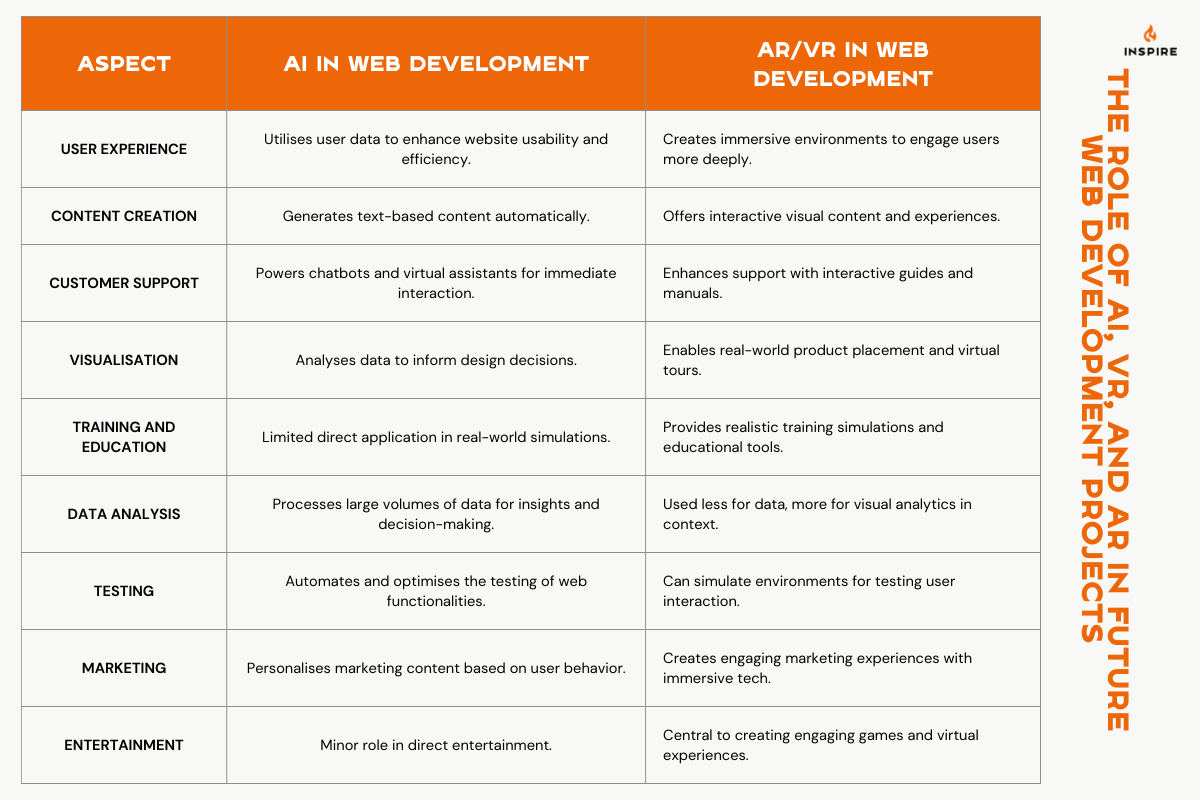Web Development Innovations: The Future of Online Experiences |
||||||||||||||||||||||||||||||||||||||||||
|
by David Dwyer on 20/05/2024 |
||||||||||||||||||||||||||||||||||||||||||
|
Users today are interacting with websites in a whole new way compared to just five years ago. Nowadays, they're all about using voice commands for searches, signalling the rise of some exciting new trends in web development. But what really are web development trends? Web development trends encompass the latest tips and tricks for creating and enhancing web applications. These trends are always changing, keeping up with fancy new tech and what users are loving at the moment. However, they primarily prioritise responsiveness and accessibility to deliver optimal user experiences. Among these trends are the implementation of voice search, integration of virtual reality, and leveraging artificial intelligence, all aimed at delivering seamless and personalised online experiences. So, in this blog, we're diving deep into the web development trends for 2024. We're talking about what they are, how they work, and why many people are looking forward to them. Let's get started! Emerging technologies and their applications in web designLet's talk about the latest emerging technologies and how they're revolutionising the field of web design. With technology evolving at an unprecedented pace, new tools and innovations are constantly reshaping the way we create and interact with websites.
These trends offer a sneak peek into the exciting changes happening in web development. For developers who stay in the loop, there's a great opportunity to create unique and successful web applications. And there's more! Beyond these important trends, there are plenty of new technologies on the horizon that could really shake up the world of web development.
These new technologies could completely transform the way we do web development. The role of AI, VR, and AR in future web development projects
Now that we've provided you with a glimpse into the world of AI, VR, and AR, let's delve deeper into their pivotal roles in shaping the future of web development projects. Artificial IntelligenceIn previous discussions about the future of technology, artificial intelligence (AI) always held a prominent position. Now, it seems that this anticipation is well-founded. Unless one has been oblivious to recent developments, significant strides have been made in the intersection of AI and web development over the past year. Notably, major tech giants like Google (Gemini), Microsoft (CoPilot), and Meta (formerly Facebook) have begun releasing their generative AI technologies for public use, not to mention ChatGPT.
With increased accessibility to AI development tools, developers are poised to explore novel applications of AI in the coming year. Already, AI plays a crucial role in data analytics, and this trend is expected to continue. For instance, GitHub's Copilot is just one example of the myriad AI programming tools seamlessly integrating into developers' workflows. Virtual Reality (VR) and Augmented Reality (AR)
What is Augmented Reality?Augmented reality, often abbreviated as AR, is a technology that allows us to overlay digital content in the real world through a device. When we view the world through this device, we can modify and enhance what we see. You've probably encountered AR through apps like Instagram, where filters can change your appearance, or during the Pokémon GO craze of 2016. What is Virtual Reality?Virtual reality, known as VR, is a technology that immerses users in simulated experiences or environments. While AR typically uses everyday devices like smartphones and computers, VR traditionally requires specialised headsets. However, developers are now integrating VR into digital experiences without the need for dedicated headsets, making these simulations accessible to a wider audience. Predictions for the next big trends in web development and designPredictions for the next big trends in web development and design point towards several key areas that are expected to shape the future of digital experiences. Here's a look at some of these anticipated trends: Voice User Interfaces (VUIs)With the increasing popularity of voice-controlled devices like smart speakers and virtual assistants, VUIs are expected to become a prominent trend in web development. Websites and applications will incorporate voice interaction capabilities, allowing users to navigate, search, and interact using voice commands. Progressive Web Apps (PWAs)PWAs offer a hybrid approach between web and native mobile applications, providing users with fast, reliable, and engaging experiences across devices. As mobile usage continues to rise, PWAs are predicted to become more prevalent, offering benefits such as offline functionality, push notifications, and seamless performance. Minimalism and simplicityMinimalist design approaches, characterised by clean layouts, simple typography, and ample whitespace, are expected to continue gaining popularity. Emphasising clarity and usability, minimalist designs offer streamlined experiences that focus on essential content and functionality. Dark modeDark mode or dark theme options have become increasingly popular among users for their visual appeal and reduced eye strain, particularly in low-light environments. Web developers are likely to incorporate dark mode options into their designs to offer users more customisation and flexibility in their browsing experiences. Microinteractions and animationsMicrointeractions and subtle animations add depth and interactivity to web experiences, delighting users and improving engagement. From hover effects and scrolling animations to loading indicators and button feedback, micro-interactions will continue to enhance user interactions and make websites feel more dynamic and responsive. These forecasts shed light on how web development and design are changing over time. It's all about how technology is advancing, how people are using the web differently, and how we're striving to create more engaging online experiences. Expert insights from InspireWe hope this article has given you some great insights into what to expect in web development trends for 2024. Things are always changing, so it's important for both developers and business owners to keep up with the latest tech to stay competitive. Here at Inspire Digital, we've got over 16 years of experience in professional web design and development. Our team has some ideas about what the future holds, like AI continuing to play a big role in web solutions, and a focus on making websites more responsive and efficient. Keep an eye on our blog for more updates and expert opinions on all things tech or get in touch with us. |
||||||||||||||||||||||||||||||||||||||||||
|
Artificial Intelligence, Augmented Reality (AR), Virtual Reality (VR)
|
||||||||||||||||||||||||||||||||||||||||||
|
|





















